
Elite life
Elite Alcoholic Drinks
Page 2
World Cuisine Recipes
Elite Alcoholic Drinks
Cocktails
Alcoholic Cocktails
Non-Alcoholic Cocktails
Nastoykas (Tinctures)
Nalivkas (Fruit Liqueurs)
Liquors
Jams
Compotes
Juices
Mushrooms
Mushroom Recipes
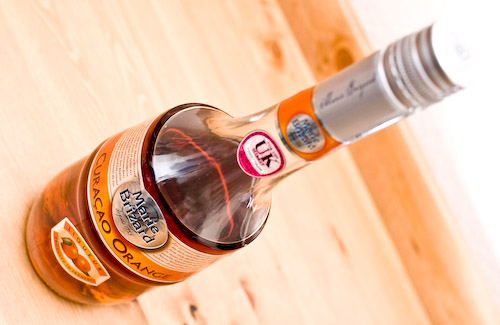
Liqueur
One of the earliest writings on the subject of flavoured alcohols and its medicinal properties dates back to 1240, that which was written by the 13th Century alchemist, Arnold de Vila Nova. It seems many alchemists across Italy and France were keen to try their hand at making herbal liqueurs. In 1605, the Marshall of artillery for King Henry VI, Francois Hannibal dТEstrees presented the Chartreuse monastery, in Vanvert with an ancient manuscript entitled СAn Elixir of Long LifeТ. Monks tried for many years to unravel the secrets of the manuscript, with little success. The manuscript was finally sent to the orders headquarters - La Grande Chartreuse, where in 1703 the complex recipe with its 130 herbs, flowers and secret ingredients were finally unveiled. The monks then went into production. The ancient recipe was called Elix Vegetal de la Grande-Chartreuse with an alcohol content of 71%, 142% proof. The drink had a distinctive natural green color and became known as Green Chartreuse. The drink proved to be more popular for its taste than for its medicinal qualities. The monks recognised this and decided to reduce the alcohol content to 55% alcohol, 110% proof, without losing any of the drinks authentic characteristics.
In 1838 the Chartreuse monk developed a milder sweeter form of the original Green Chartreuse, which contained 40% alcohol, 80% proof with a distinct yellow colour, which has become known as Yellow Chartreuse. With most beverages people strive to find their perfect food compliment like in the case of wine, it works well with cheese and biscuits. Liqueurs too have a perfect partner that is chocolate; the two flavours marry well together to create a fantastic mouth-watering fusion.
Brands of Liqueur, producible in Austria
Brands of Liqueur, producible in Finland
Brands of Liqueur, producible in France
Brands of Liqueur, producible in Germany
Brands of Liqueur, producible in Ireland
Brands of Liqueur, producible in Italy
Brands of Liqueur, producible in Mexico
Brands of Liqueur, producible in Netherlands
Brands of Liqueur, producible in United Kingdom
Brands of Liqueur, producible in Amerika
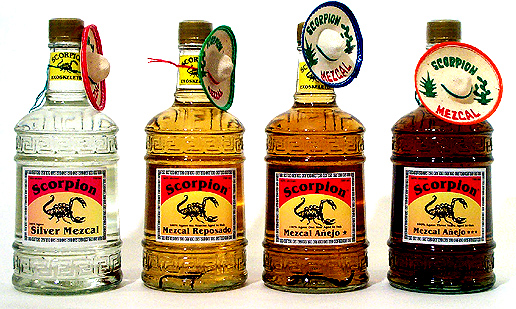
Mescal
The word Mezcal comes from Metl or Mexcalmetl, the prehispanic Nahuatl language, meaning Agave. Today the commonly used word for Agave in Oaxaca is Maguey. The Spanish were introduced to the art of distillation by the Moors in 800 A.D., and they brought the technology with them when Cortez landed in 1519. It was a short time before the indigenous peoples began to use their native maguey for producing mezcal. The magueys existing in the state of Oaxaca vary from the giant pulque maguey (Salmiana), maguey silvestre (wild), maguey tobala (the tiny, extremely itchy wild mountain variety that produces an excellent rare mezcal), maguey espadin (sword, the most commonly used and the genetic mother of the Blue Agave), tepestate (horizontal), larga (long), papalometl (agave cupreata another wild variety), arroqueno, to a larger variety of maguey azul.
The Agave is not a cactus. It was once classified in the same family with Lilys and Aloes. Today it is classified in its own family, Agavaceae, which consists of more than 400 species.
The one consistency is that almost every village, town and region has its producers of local mezcal. The plants are propagated by almost everyone in small village garden plots until they are about two years old and roughly two feet tall. At this time, they are uprooted, their leaves are tightly bound and the roots are cut off. They are left in the shade to heal for about fifteen days. Next they are transported to the outlying hills where they are transplanted and left to grow as fence borders for mountain fields. After another four to ten years, they are harvested and sold as a cash crop to local distillers. All they want is to be weeded three time a year until maturity.
The pinas are placed in a rock-lined conical pit (palenque) about twelve feet in diameter and about eight feet deep. They are laid over many hot rocks that have been piled and heated for four hours over an intense oak fire. A layer of the previously used moist fiber from the plant covers them, followed by (in some villages banana leaves), woven palm-fiber mats (petate) and finally a layer of earth. They bake this way for three to five days, absorbing flavors from the earth and wood smoke and oils on the rocks. Our Producer of Tobala leaves the roast hearts buried for a month!
The pinas are removed and rested covered by palm mats in the shade for a week where they begin to ferment naturally with airborne microbes, then placed on the ground inside a ring of stone or concrete about twelve feet in diameter. In the center is a vertical post connecting an axle to a huge vertical circular millstone. This stone wheel is pulled around and around the circle by horse to crush the maguey. In the case of Minero the maguey is ground by men wielding oak bats in a stone trough.
The crushed maguey is then placed in wooden vats that hold about three hundred gallons and about 10% village water is added (the only component other than roast maguey in our Mezcal). The mash (tepache) is covered with palm-fiber mats and ferments naturally with its own yeasts and microbes that live at the specific altitude of the village for four to thirty days.
The mezcal solids and liquid (tepache) are then transferred to a copper or ceramic (de olla) still which holds about twenty-five gallons. A copper "sombrero" is placed on top and the mix is slowly heated by wood fire, vaporized and condensed. Each distillation takes about twenty four hours so as to not "burn" the flavor. The fiber is cleared out of the still and the "punta" the clear alcohol from the first distillation is placed back in the still and the distillation process is repeated. The resultant liquid is mezcal.
There exist other even more rare mezcals produced in tiny quantities in remote villages such as TobalaЩ and PechugaЩ. They are difficult to produce and even more difficult to obtain! Del Maguey now brings them to the marketplace for your enjoyment being sure to not consume the village's share.
There is a high reverence for this magical liquid and its ceremonial, social and medicinal uses among the villagers. There is obvious pride regarding the mezcal's power. There is also great disdain for the "cheap," diluted, chemically altered liquid sold commercially.
The way mezcal affects one's palate and the way it warms the chest, throat and mouth are quite different than any other alcohol. And Del Maguey mezcals transcend all others.
Brands of Mescal, producible in Mexico

Rum
The first true rums were made in the Caribbean during the early 17th century by fermenting the molasses left over from refining sugar into a heady liquor. Barbados is held by many to be the birthplace of rum, and for many years the Caribbean rums were known for their low quality and fiery taste. Not much later, much of the production of rum moved to New England, which used imported Caribbean molasses to produce their liquor. By the end of the 17th century, rum was New EnglandТs most produced commodity and played a crucial role in the establishment of the region's early economy.
Eventually, rum helped establish what became known as the triangular trade, a three-part loop of international trade that endured until the late 18th century. Because of the popularity of New England rum throughout the Old World, more sugar plantations were needed in the Caribbean. With the increase of sugar plantations to produce sugar for consumption and rum making, more labor was needed to work the land. Slaves were taken from Africa to the Caribbean, where they were traded to plantation owners for molasses, which was brought to New England and traded for rum, which in turn was sold in Europe to generate more wealth to purchase more slaves.
Rum was a hugely popular drink both in the Americas and in Europe Ц so much so that, for a time, some New England rum was used alongside gold as an acceptable currency. Nowhere, however, was rum more popular than at sea. As the British Royal Navy became active in the Caribbean, rum replaced brandy as the standard liquor ration Ц a rationing that continued until 1970. With the dawn of the great age of piracy in the latter quarter of the 17th century, became the drink of choice for pirates and privateers operating in the Caribbean and off the coast of Africa.
Rum is one of the most ill-defined of the worldТs major liquors, with standards differing drastically from nation to nation. In general, however, light rums are low on flavor and primarily used in mixed drinks, gold rums are slightly higher-quality and aged somewhat, and dark rums are aged even longer and have a very rich and full flavor. Many rums are also flavored with spices, coconut, and various fruits. Rum may be enjoyed on its own, in cooking, or in a mixed drink, though most rum connoisseurs hold that a rum should be aged and drunk alone or on the rocks.
Brands of Rum, producible in Bahamas
Brands of Rum, producible in Caribbean
Brands of Rum, producible in Cuba
Brands of Rum, producible in Jamaica
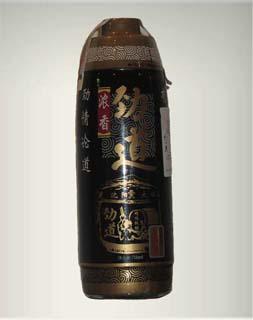
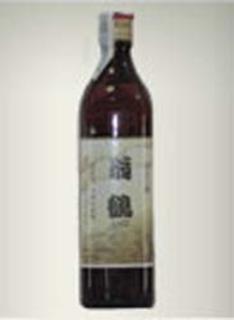
Sake
Sake was first brewed in Japan after the practice of wet rice cultivation was introduced in that country around 300 B.C. Though the origins of sake can be traced in China as far back as 4,000 B.C., it was the Japanese who began mass production of this simple but delicious rice concoction. The basic process of making sake involves "polishing" or milling the rice kernels, which were then cooked in good, clean water and made into a mash. The earliest "polishing" was done by a whole village: each person would chew rice and nuts and then spit the mixture into a communal tub Ц the sake produced was called "kuchikami no sake," which is Japanese for "chewing the mouth sake." The chewing process introduced the enzymes necessary for fermentation. Although it was part of a Shinto religious ceremony, this practice was discontinued when it was learned that Koji (a mold enzyme) and yeast could be added to the rice to start the fermentation process.
At first, sake was produced for private consumption by individual families or villages. While this practice continued, sake rice also became a large scale agricultural product. The largest production area was centered around Nada, near the present-day city of Kobe. Although more sake was being made, it was mostly consumed by the upper classes. Sake was used for many different purposes in the Shinto religion, including as an offering to the Gods and to purify the temple. The bride and groom each consume sake in a Shinto wedding ceremony in a process known as Sansankudo. There were many other uses for sake in Shinto, most of which are still in practice today.
It was in the 1300s that mass production of sake allowed it to become Japan's most important drink. In the years that followed the production process was improved, and sake breweries popped up throughout the nation. All of the early variations of sake were cloudy until a seventeenth century brewery worker thought to use ashes to settle the cloudy particles in the sake. The story has become somewhat of a legend, because the employee was apparently disgruntled, and was trying to destroy the batch; instead, his actions refined the sake and earned him a place in history. Japan's Industrial Revolution in the nineteenth century introduced automation and machinery into the brewing process, making this popular drink even more available.
In the twentieth century, a press replaced the traditional canvas bags for squeezing the liquid out of the rice mash, yeast, and koji mixture, although some sake is still brewed the old-fashioned way. Shortages of rice in World War Two also caused changes in the brewing process: glucose and pure alcohol were added to the rice mash in order to increase the production yield and brewing time. Although borne of necessity, this process has been continued to this day, but sake made with just water, koji, yeast, and rice is still available.
Though the brewing process and availability of sake has changed over the years, sake's important role in Japanese culture has not. From its earliest beginnings sake has been a drink of reverence, family, and friendship, consumed to mark important occasions. Because it is meant to be enjoyed with friends and family, tradition holds that a person must never pour their own sake; instead another person pours for you, and you do the same for them. For thousands of years sake has been a major part of Japanese life, and its popularity is now increasing on the international stage.
Brands of Sake, producible in China
Brands of Sake, producible in United States
Brands of Sake, producible in Japan
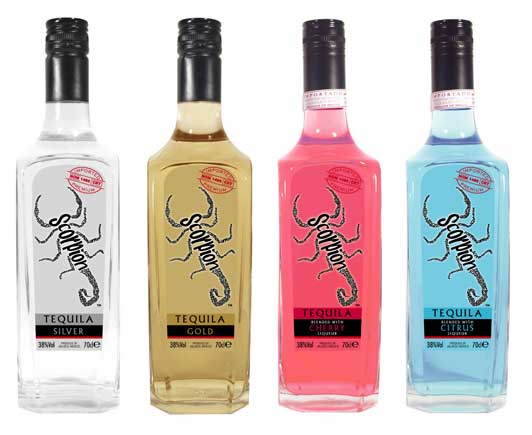
Tequila
Long before the Spanish Conquistadors invaded their country, the native people of Mexico were fermenting sap from the agave to make a nutrient-rich drink they called pulque. It is likely to have been the influence of the Conquistadors that led to the distillation of this drink into a stronger spirit, mescal wine, which eventually became known as tequila. The first tequila factory was established in 1600 and in 1608 the first taxes on tequila were introduced. This was followed soon after by regulations to control the industry. The first licensed manufacturer was Jose Antonio Cuervo; today Cuervo is still the largest manufacturer of tequila. All went well and tequila became an important export for Mexico until, in 1785, Charles III of Spain decided it was becoming a little too popular and threatening the Spanish market for wines and liqueurs, and he banned it. But you canТt keep a good thing down Ц although production did go down, literally, underground Ц and in the 1790s the ban was lifted.
The continuing history of tequila is very much tied in with, and reflects the ups and downs of, MexicoТs own history. Thus, during the War of Independence with Spain, trade was affected and there was a down-turn in its popularity. After 1821, when Mexico attained its independence, and Spanish goods were harder to come by, tequila was on the up again. During the Mexican Revolution a century later tequila became the symbol of national pride, but in the aftermath, when land was redistributed, many of the larger commercial producers suffered. By 1929 there were only eight left in the country. American soldiers guarding their border with Mexico were only too happy to receive smuggled goods and tequila made its way into the United States. During the prohibition era, even more was smuggled in, but tequilaТs popularity really grew after the outbreak of World War II, when spirits from Europe were hard to come by. The 1968 Olympic Games in Mexico City brought tequila to the worldТs attention, and in 1983, Chinaco, the first premium tequila to be sold in the U.S was released, at last ensuring tequilaТs place in polite society.
Brands of Tequila, producible in Mexico

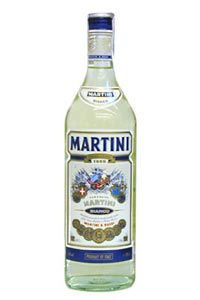
Vermouth
The earliest references to vermouth can be found in Italy during the late 1700s. Antonio Benedetto Carpano, from Turin, called the wine vermouth after the German word for wormwood, Wermut. A German wine flavored with wormwood inspired his creation of vermouth. At the time, distillers used the herbs in vermouth to try to disguise its low quality as a wine, which carried a medicinal taste. Because of the many medicinal herbs, such as nutmeg, coriander, cinnamon and marjoram that went into its creation, vermouth was sometimes marketed as a health tonic. When vermouth was first marketed, all its varieties were sweet. The French invented the dry vermouth sometime in the early 1800s.
Brands of Vermouth, producible in Italy
Brands of Vermouth, producible in Moldova

Whiskey
The knowledge of distilling was discovered somewhere in Asia around 800 BC. Initially the technique was only used to make perfume, but there is evidence that the Chinese also distilled liquor from rice at this time. It is unclear exactly how the knowledge of distillation found its way to the British Isles, but we know that the craft was brought to Europe by the Moors. What most likely happened then was that the knowledge spread through EuropeТs monasteries. A common theory is that it was St. Patrick, the Patron Saint of Ireland, who brought the art with him when he came to Ireland as a Christian Missionary in 432AD. In any event, the knowledge at some point came to the Celts who used it to make their Uisge Beatha, which is Gaelic for Сwater of lifeТ. We have the Celts to thank for the word СwhiskyТ at least, since СwhiskyТ can be derived from the Gaelic word СUisgeТ. The year 1494 is a milestone in the history of whisky; in the Exchequer Rolls of that year is recorded a purchase of Сeight bolls of malt to Friar John Cor wherewith to make aqua vitaeТ. This is the first written proof of whisky production in Scotland. As with many other crafts the knowledge of distilling soon spread outside of the monasteries, and eventually the Сwater of lifeТ came to be produced on almost every farm in Scotland. This widespread household production was to continue until the 1820s when the Excise Act was passed and local government started to come down harder on illicit distilleries.
Whisky back in the sixteenth century tasted very different from the drink we enjoy today. At that time whisky was consumed very young and had a brutal, raw taste. The discovery that whisky improves and mellows if it is allowed to mature was not made until the mid eighteenth century. As with many other breakthroughs the discovery was made by accident; an old forgotten cask was found, and the lucky owner realised that the whisky had in fact not been destroyed but instead tasted better than ever. The Act of Union in 1707 united the parliaments of Scotland and England. The treaty was the result of political and economic factors which all indicated that a union would be mutually beneficial. The government naturally wished to expand the treaty and the turn eventually came to malt. After a violent period with many riots with deadly outcomes an equivalent to the English Malt Tax was finally applied in 1725. This was the start of an era filled with illicit distilleries, smuggling and roving Excisemen. In the beginning of the nineteenth century more than every other bottle of whisky in Scotland was illegally produced. The following years saw a large number of tax raises, the introduction of different duties for different distilleries and other license regulations. Crime and violence was common and the administration of all the regulations eventually became unmanageable. In the 1820s the government had had enough and passed the Excise Act which made clear exactly what kind of production was legal and what was not. Another act was also passed that substantially increased the penalties for smuggling. The new acts had the desired results and illicit distilling and smuggling was greatly reduced in only a few years.
In 1831 a former Inspector General of Excise in Ireland, Aeneas Coffey, invented a twin-column version of the patent still. This improved technique in continuous distillation lowered production costs and allowed simultaneous use of malted and unmalted barley together with other kinds of corn. The Irish never liked the idea but Coffey managed to introduce it in Scotland. In just a few decades, the Irish standpoint would make them loose the dominance over the whisky industry; the Coffey Still could produce great quantities compared to the traditional stills but produced an inferior product. The solution to this problem was to blend the spirit from the Coffey Still with whisky from traditional stills. Andrew Usher introduced this idea in 1852, and the blending trade was born. Because of the immediate success of blended whisky, the Scottish volumes soon far exceeded the Irish. This advantage in volume soon became important; at about the same time as the introduction of blended whisky the American vine louse Phylloxera vastatrix came to France. The pest rapidly spread and reached the Cognac region by the 1880s. The louse all but destroyed the entire brandy industry and the blended whisky was readily accepted as an alternative. By the time the French vineyards had recovered, whisky had ceased to be Сonly an alternativeТ and was firmly established at the top.
Whisky started out as a product for the British market in the 1820s, but today it has become a drink that is appreciated and loved around the world. Much of this incredible development is the result of the introduction of blended whisky; even today approximately 90 percent of all whisky that is produced in Scotland is used in blended whisky. However the interest of single malt whisky has increased in recent years and this development is likely to continue.
Brands of Whiskey, producible in Amerika
Brands of Whiskey, producible in Ireland
Brands of Whiskey, producible in Canada
Brands of Whiskey, producible in Scotland
Brands of Whiskey, producible in Japan
Page 2